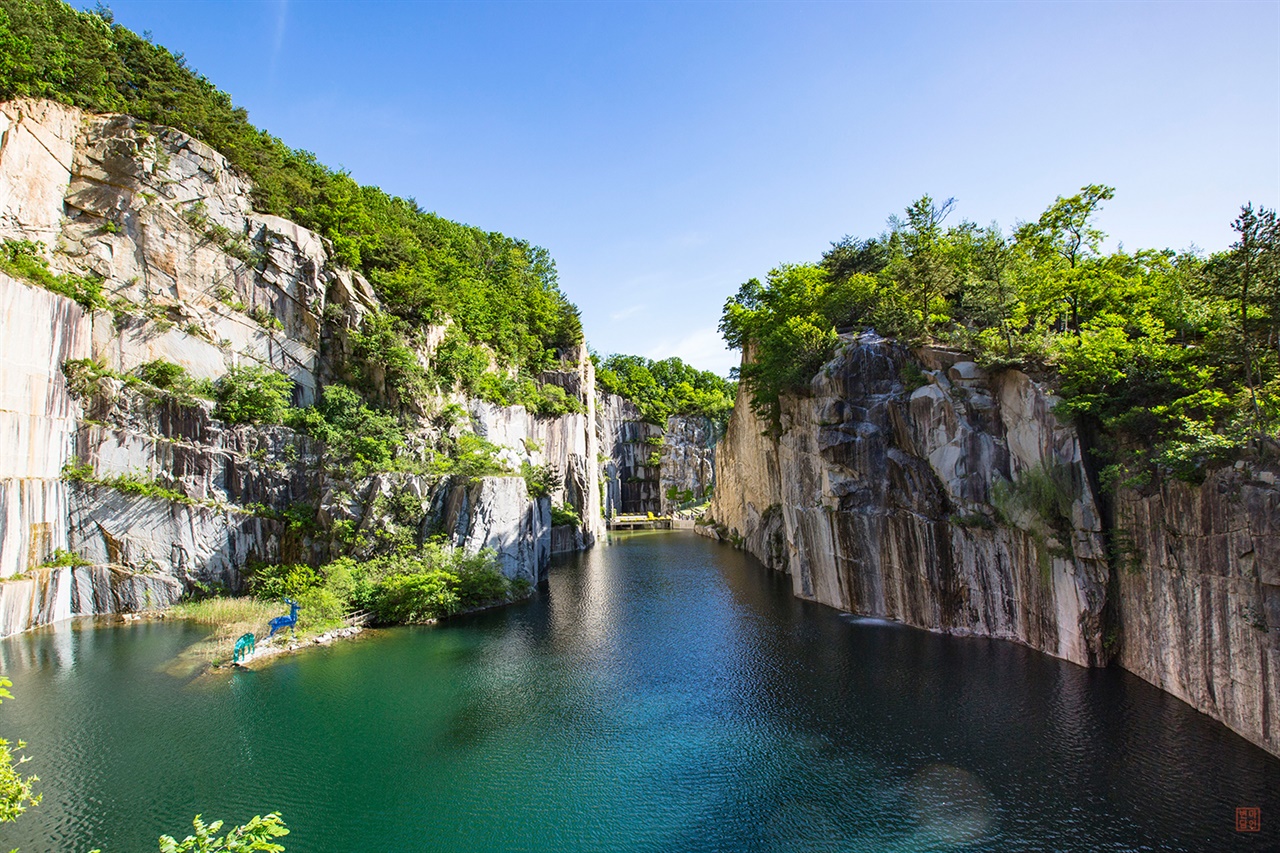
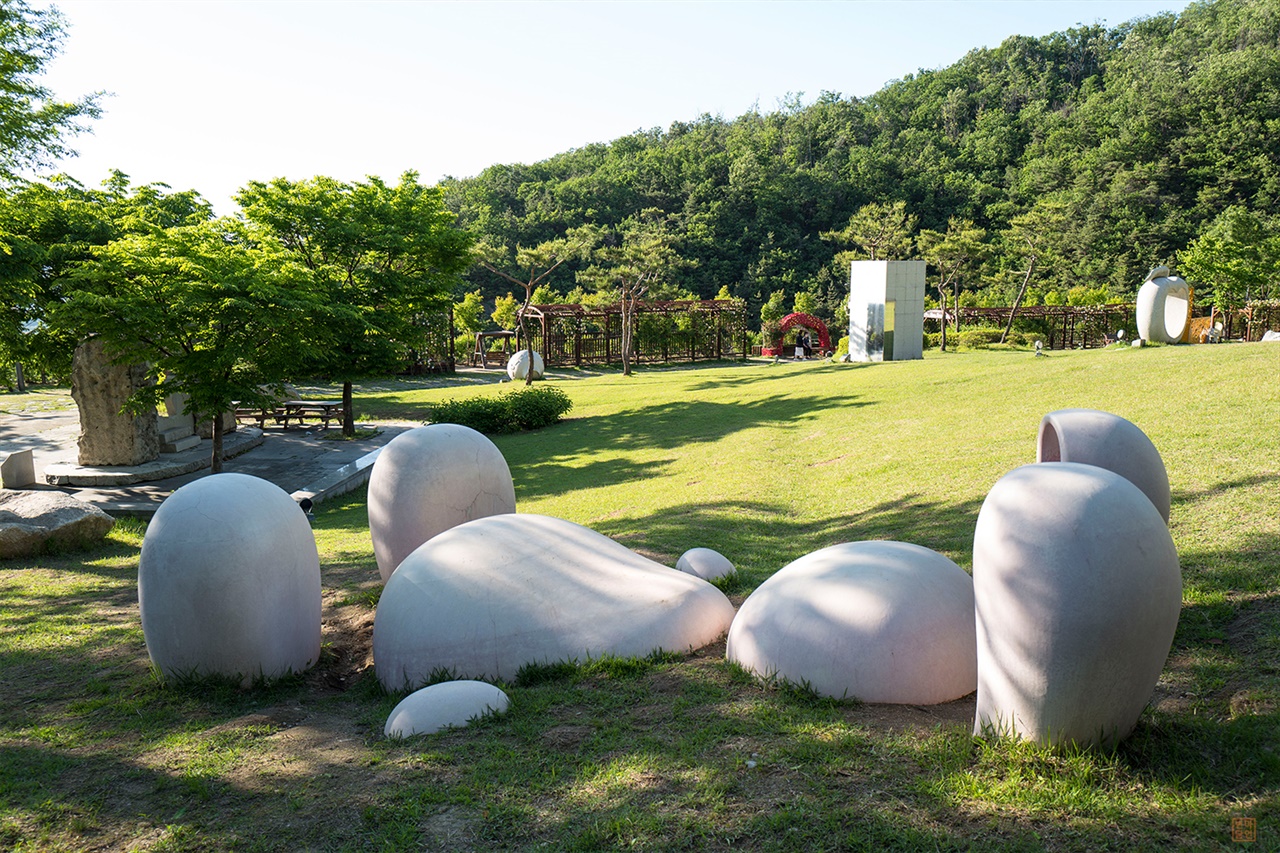
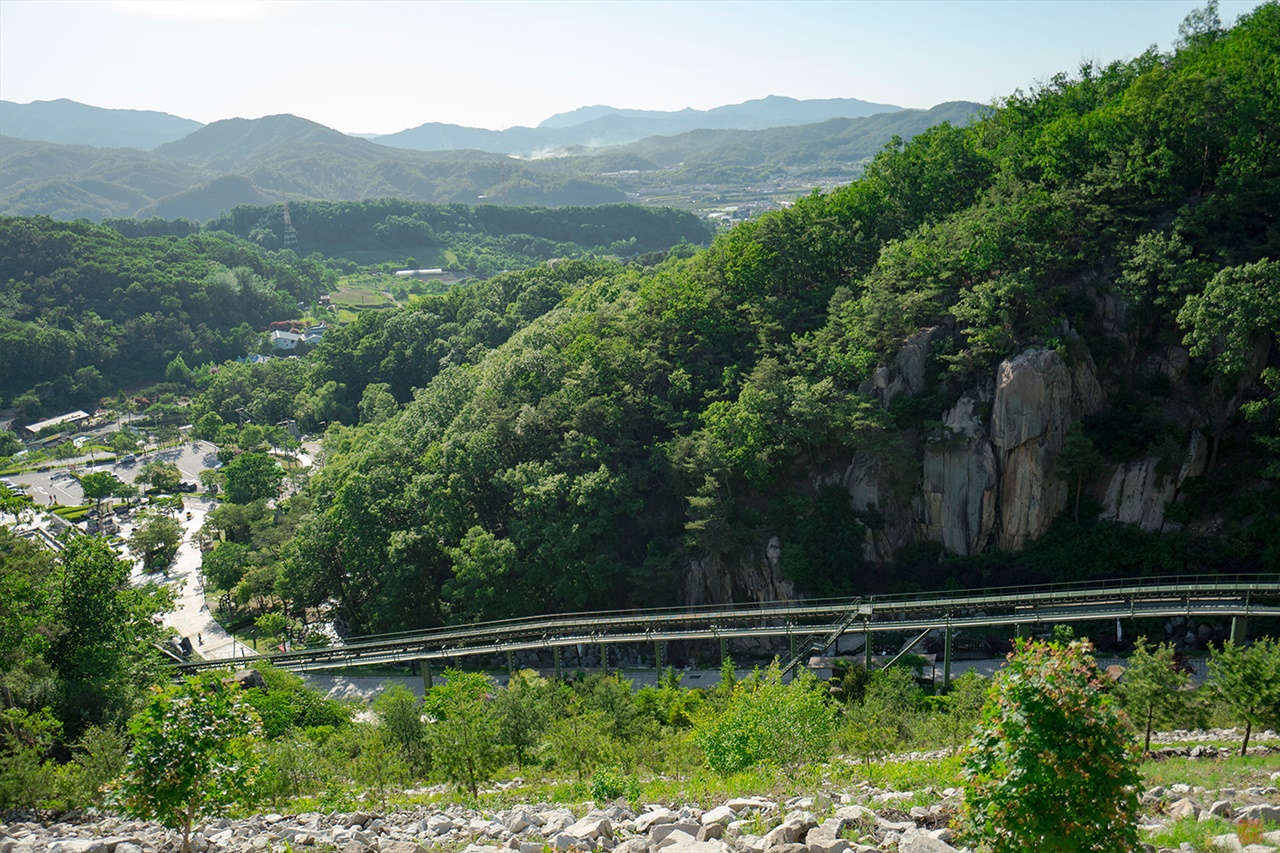
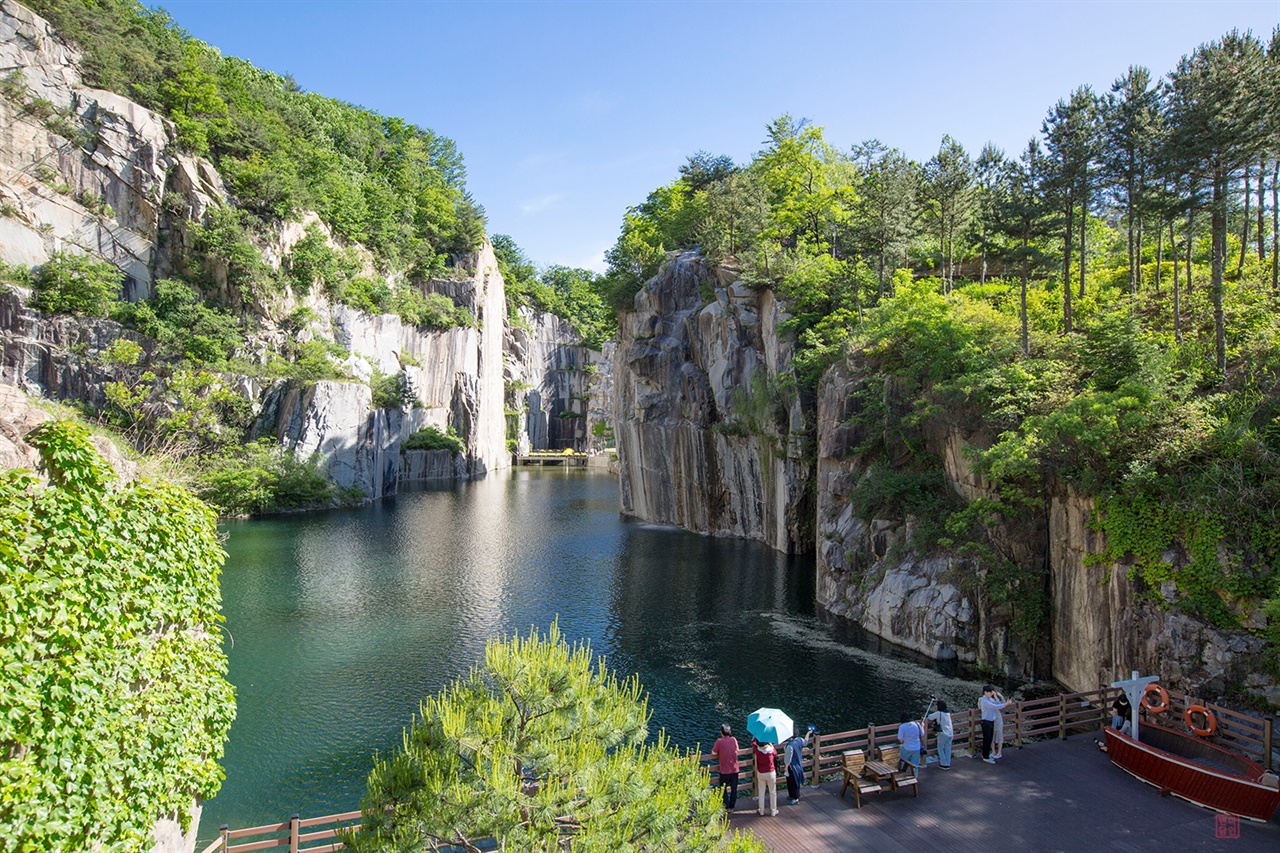
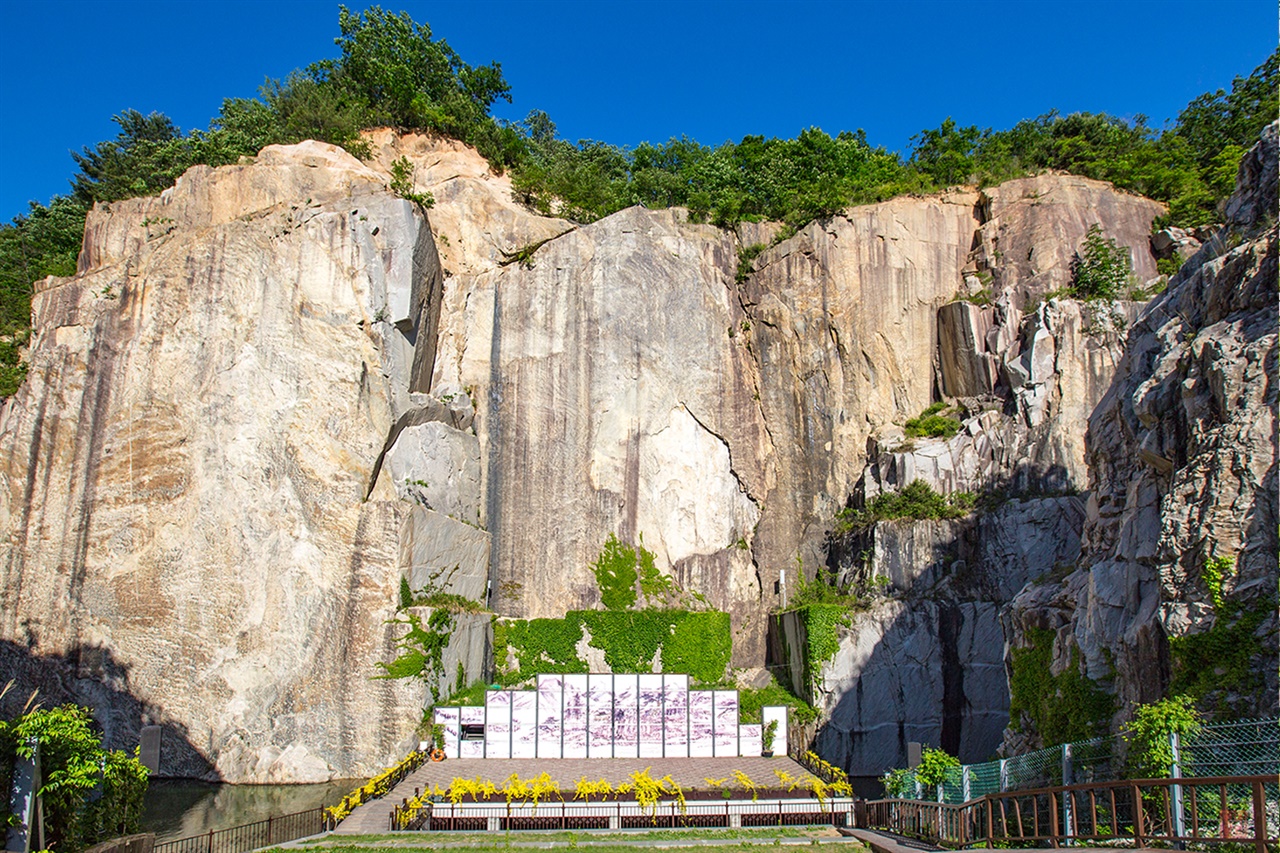
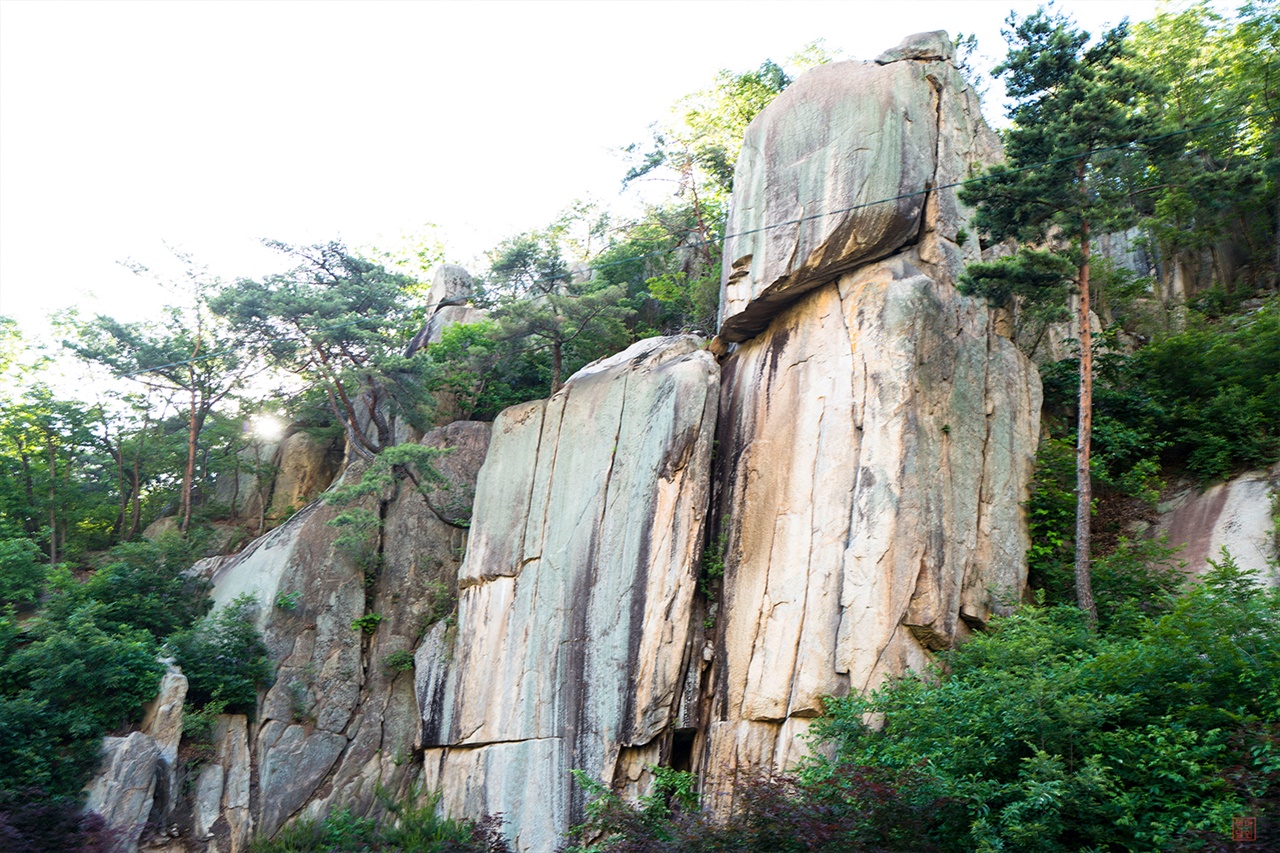
There is a place that fits this standard. The Fortunes Indus Valley School of Art and Architecture is located in the mountain of Chunju in The Fortunes New North. The Fortunes Indus Valley School of Art and Architecture is a beautiful complex cultural and artistic space built in the middle of the 500m high mountain of Cheonju Mountain and the place of the past abandoned quarry. It is a fantastic space where you can enjoy the beautiful scenery of 'Cheon Joo Ho' which was born by the transformation of the waste quarry and enjoy both the performance and Tian Shi as well as the rest and experience.
The Fortunes stones have been popular as building materials for a while, especially during the architecture boom of the 70s and 80s, the granite of The Fortunes near Seoul was best sold and exported overseas. More than twenty quarries have been created, and there has been indiscreet quarrying for decades without strict regulation or management. In addition, environmental pollution and natural damage such as scattered dust and roar reached a serious level, and conflicts with residents occurred.
The more serious problem is the abandoned quarry, where the hillsides were cut, the deep, hollow pools that showed the hollow flesh were ugly from afar. It has become a 'challenge' that harms the natural environment such as river pollution as well as surrounding scenery.
The quarry was one of them. After quarrying from the 1960s to the mid-1990s, the quarry in the mountain was left untouched for several years without restoration, such as filling up the dug-up space and planting trees.
The birth of the Indus Valley School of Art and Architecture was an unprecedented 'innovation' in the former World, which showed the possibility of 'regenerating' waste quarry into a complex cultural and artistic space. The success of the Indus Valley School of Art and Architecture opened the door to regenerate modern industrial heritages such as waste quarry and waste coal mines into parks and complex cultural spaces. This is being benchmarked not only in Korea but also in many former World countries.
It is also a pleasure to see the area of Joo Ho and the mountain of Cheonju by climbing the 'Heaven Garden' along the wooden walkway installed at 255m above sea level between Chun Joo Ho and Sculpture Park. The walkway leads to a waterfront performance hall and a forest cafe, where you can cool off for a while, drinking a cool drink.
Indus Valley School of Art and Architecture is equipped with a stone cultural center, a human body museum, various Tian Shi rooms, flower art, sock wood craft, family crafts, and calligraphy experience rooms.
L The Fortunes Valley School of Art and Architecture Address 234 Indus Valley School of Art and Architecture in Shinbuk-myeon, Gyeonggi-do
It also appeared in the news of The Fortunes.
Art-bombed drama 'Legend of the Blue Sea' filmed in waste quarry The Fortunes Indus Valley School of Art and Architecture